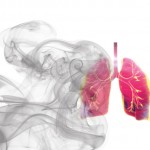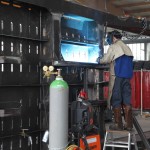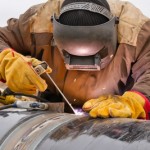Gas welding: Nitrogen and carbon hazard in welding fumes
Whether your welding sheets of pipes: Oxyacetylene welding (gas welding) stands for high accuracy. But even this relatively slow process releases hazardous substances and not only the dangerous nitrogen dioxide.
Have you ever been in confined spaces where oxyacetylene welding work is carried out without adequate ventilation? Then you may know the consequences: Nausea and headaches! Even when the symptoms of excessive inhalation of welding fumes during gas welding are felt only hours later. Whover inhales these gases regularly, also runs the risk of suffering from severe respiratory diseases.
Pollutant concentration depending on the flame size
The danger of welding fumes with oxyacetylene welding: In this method, nitrogen oxides are produced, known as nitrous gases. Air pollution control is especially focused on nitrogen dioxide (NO2). It is a corrosive irritant gas, which damages the mucous membrane in the entire respiratory tract and also irritates the eyes. The pollutant causes inflammation in the airways and in addition, increases the irritant effect of other air pollutants. As a result, shortness of breath, coughing, bronchitis, pulmonary oedema, an increasing susceptibility to respiratory infections and a reduction in lung function may occur.
Welders can often detect the presence of nitrogen oxides from its pungent odour. In gas welding, the pollutant concentration in the workplace increases with the size of the flame and therefore also with the burner size and the distance of the nozzle to plate. The nitrogen dioxide concentration when working in confined spaces is critically without adequate ventilation measures. It can reach ten times the value with a free-burning flame compared to a flame of only 15 millimetres in length.
Carbon oxides can cause choking
But not only nitrogen oxides, dangerous carbon compounds are also released during gas welding. For example, carbon monoxide is produced by the incomplete combustion of gases, fluxes and coatings. What is insidious: This hazardous substance is odourless. If one breathes an increased concentration of carbon monoxide, the gas bonds many more times stronger to the red blood cells than it does to the oxygen contained in air. This leads quickly to a lack of oxygen in the blood.. Even small amounts of carbon monoxide lead to irreversible heart and brain damage. At high concentrations in closed spaces without ventilation, the inhalation of carbon monoxide can even result in completely unnoticed death by suffocation.
Similar conditions incidentally are also produced with high concentrations of carbon dioxide. Dizziness, increased heart rate, increased blood pressure, difficulty breathing and loss of consciousness, the so-called carbon dioxide narcosis. The maximum allowable concentration for a daily exposure of eight hours is 0.5 percent Carbon dioxide concentrations of eight percent will lead to death within 30 to 60 minutes.
Used mainly in sheet metal and pipes
Gas welding is used mainly when joining sheets and pipes made of low-alloy or unalloyed steel. It is an accurate, but relatively slow process, which prolongs the duration of the welding process and thus contact with hazardous substances.
If you want to make sure that no hazardous substances are inhaled with the gas welding, pay attention should be paid to installing an efficient extraction system and good ventilation of the workplace.





